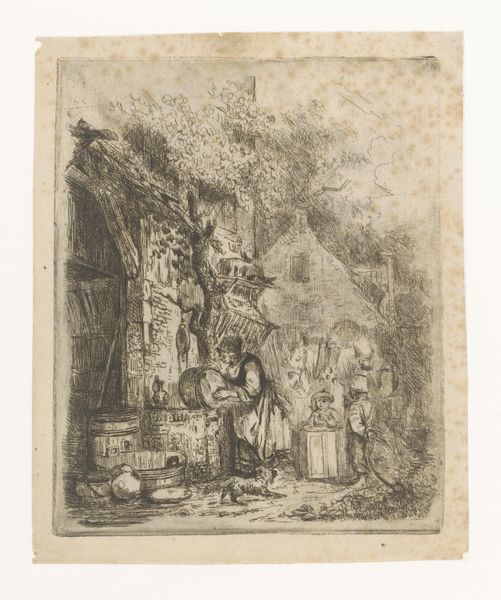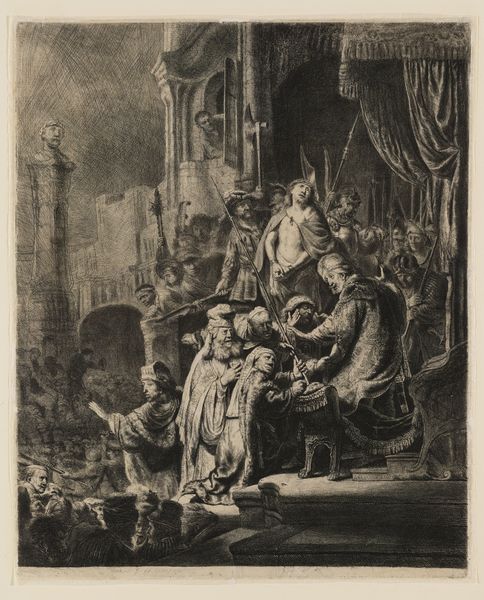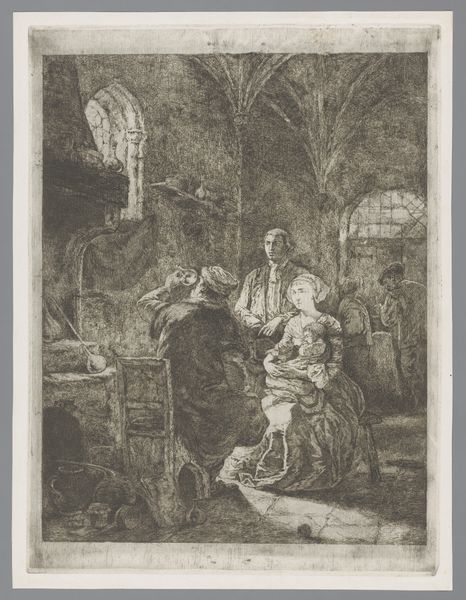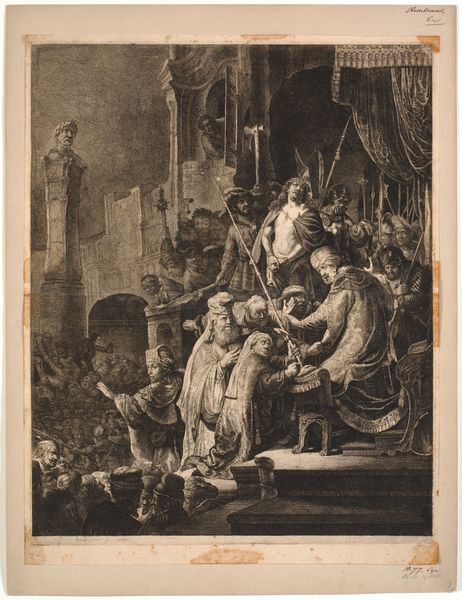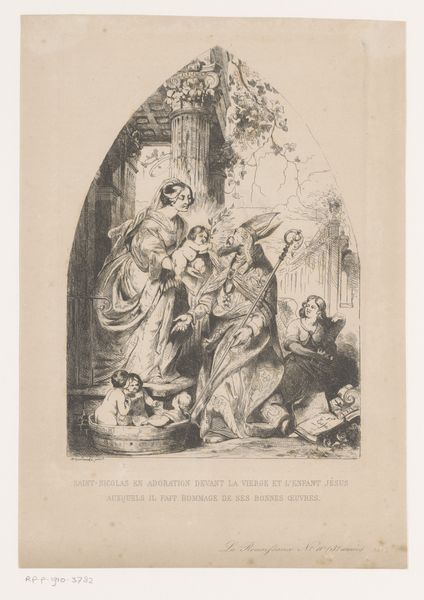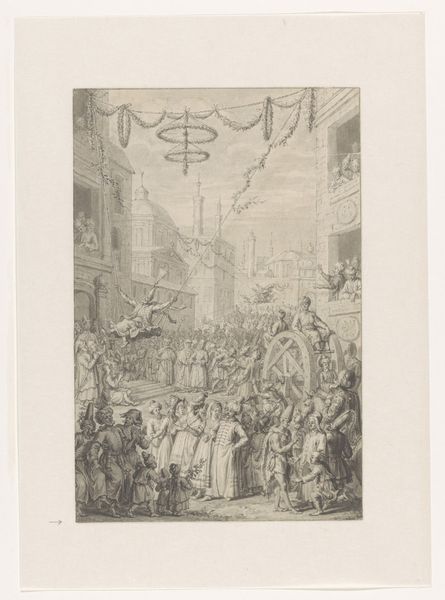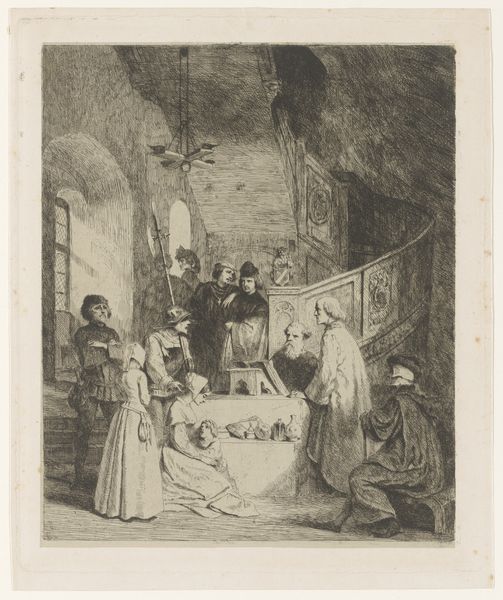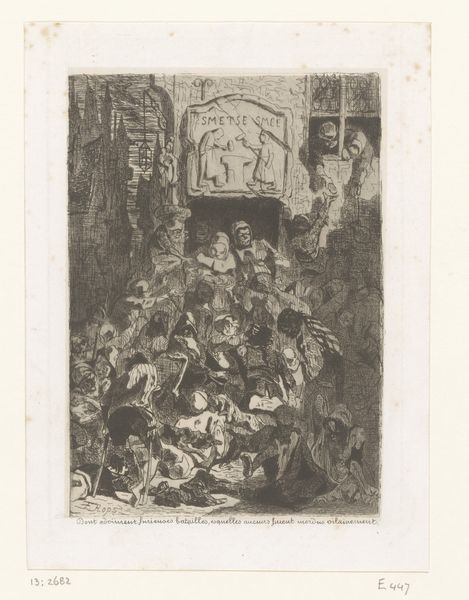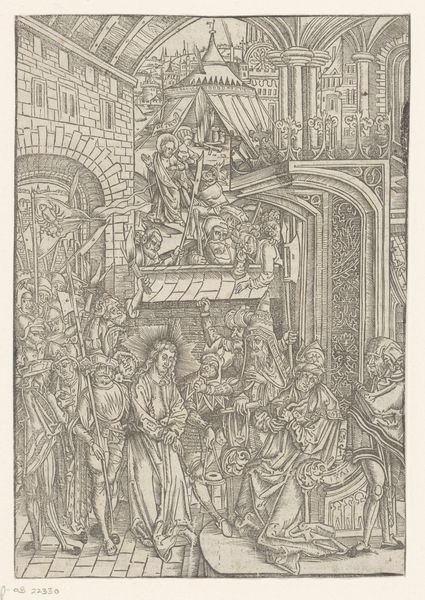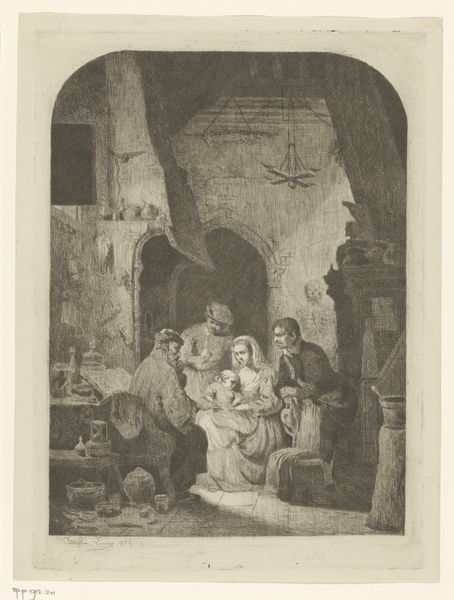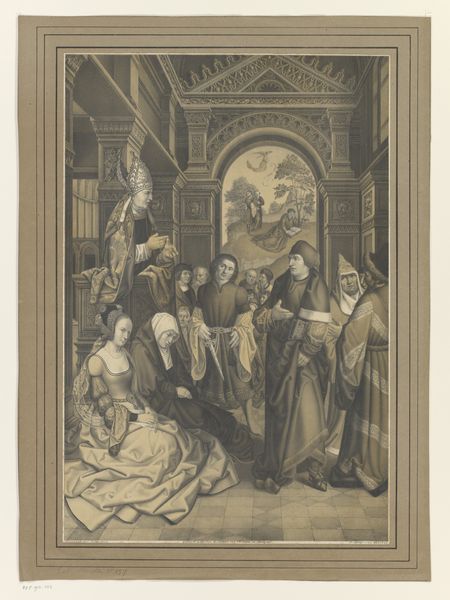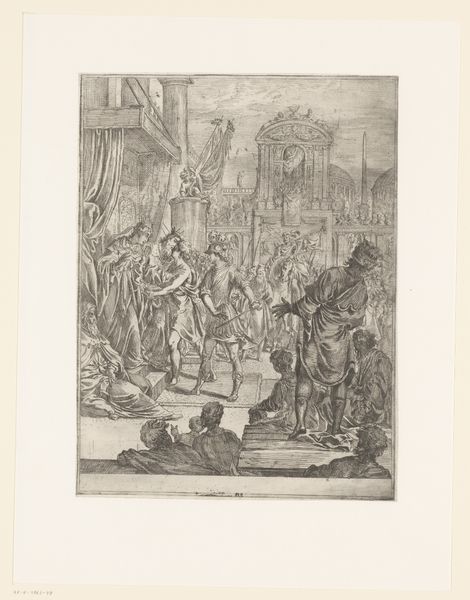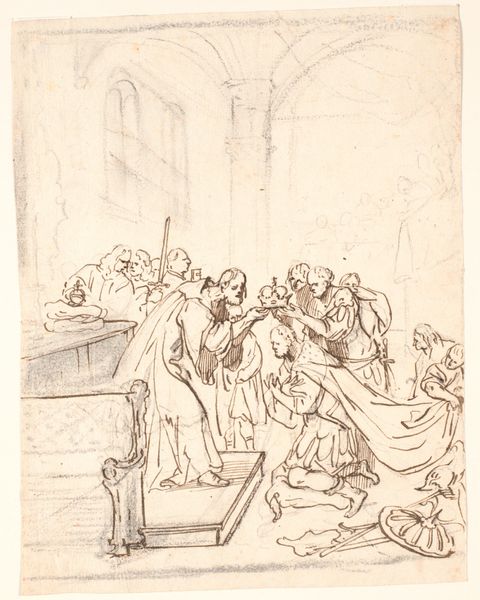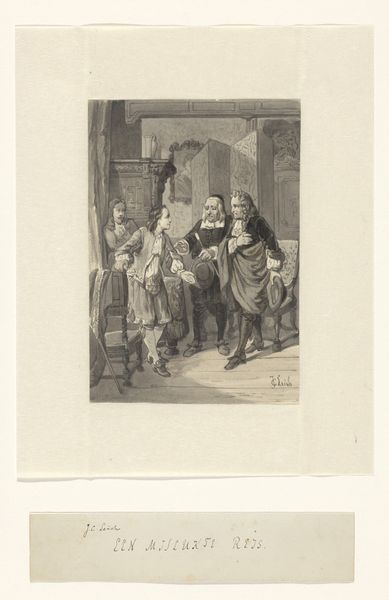
drawing, print, ink, engraving
#
drawing
# print
#
ink
#
pencil drawing
#
cityscape
#
genre-painting
#
street
#
engraving
Dimensions: height 258 mm, width 187 mm
Copyright: Rijks Museum: Open Domain
Editor: So, this is "View of a Busy Street in Antwerp in the Sixteenth Century," an ink and engraving print by Henri François Schaefels, created in 1872. The scene is so lively and bustling! What do you see in this piece? Curator: I see a carefully constructed image steeped in historical consciousness. Schaefels wasn't just depicting a street; he was evoking a cultural memory of Antwerp's golden age, using costume and architectural detail like symbolic anchors. Notice the halberd—it speaks of civic order, but also hints at potential unrest. Do you pick up on any visual tension between those two themes? Editor: I do, now that you point it out. There's a sense of spectacle, but also maybe surveillance. Curator: Exactly. The architecture, the clothing—all are signifiers meant to conjure a specific emotional response. And think about *why* an artist in 1872 would look back to the 16th century with such detail. What kind of cultural anxieties might Schaefels be playing with, or against? Editor: Maybe anxieties about industrialization or the changing social order of his own time? Using the past to comment on the present? Curator: Precisely! It becomes more than just a historical recreation; it becomes a lens through which Schaefels and his audience could examine their own world. The symbolism offers a way to access complex feelings about the march of time and shifting power dynamics. Editor: That's a much richer reading than I initially had. It makes me want to dive deeper into the history of Antwerp and its symbolic representations. Curator: And that's the power of art, isn't it? To invite us to look closer at the world around us, and the cultural memories that shape it.
Comments
No comments
Be the first to comment and join the conversation on the ultimate creative platform.
